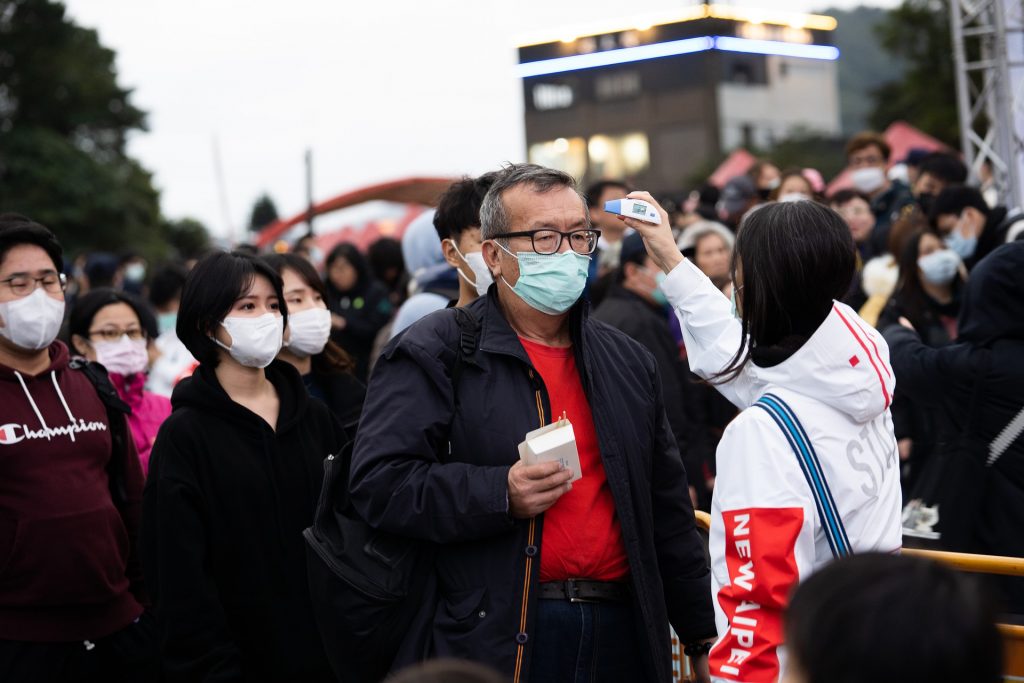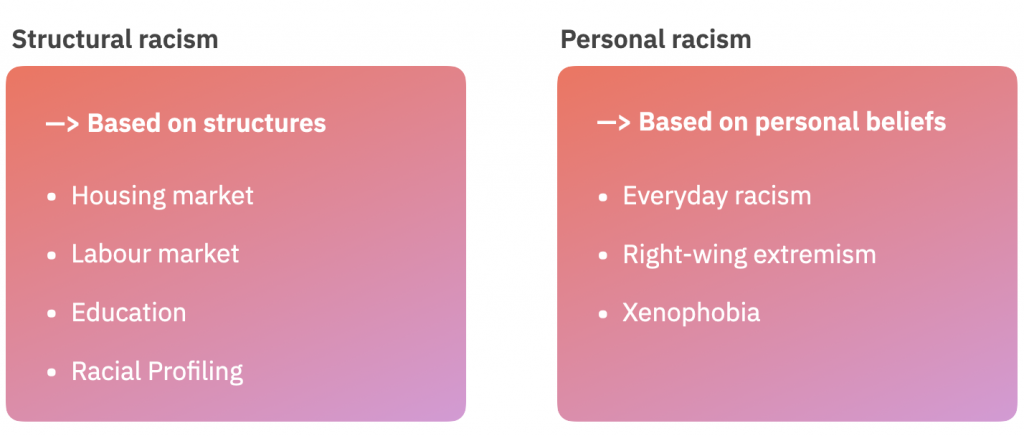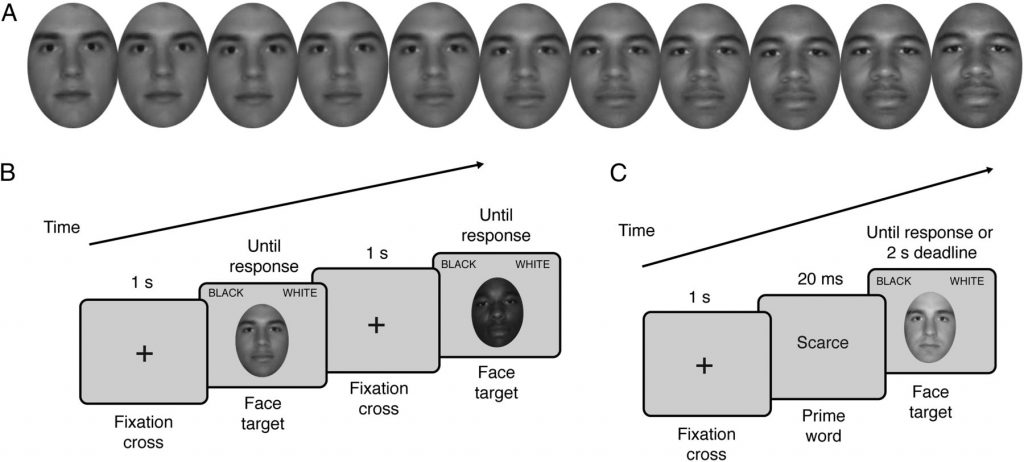
The Corona pandemic has worsen racism towards some ethnic groups, but it has not created something that was not already there. This article examines how racism has developed during the Corona pandemic. In addition, a study will be referred to which examines psychological aspects of the perception of ethnicity under scarcity.
Definition of racism
To understand the meaning of “racism“ in this article, the definition according to the European Commission against Racism and Intolerance (ECRI) is stated in the following:
“racism” shall mean the belief that a ground such as race , colour, language, religion, nationality or national or ethnic origin justifies contempt for a person or a group of persons, or the notion of superiority of a person or a group of persons.
(ECRI, 2017, [2])
In this definition the word “race“ is used, which is quite controversial. This is because this word implicates that different races do exist although that is not true. The ECRI stated in their „General Policy Recommendation No.7 that they reject “theories based on the existence of different “races”. However, in this Recommendation ECRI uses this term in order to ensure that those persons who are generally and erroneously perceived as belonging to “another race” are not excluded from the protection provided for by the legislation“ (ECRI, 2017, [2]). In June 2020 there was a debate in Germany about removing the word “race“ from the German Basic Law (TAGESSCHAU, 2020, [3]). But until now there was no decision made yet.
Structural vs. personal racism

In this article two forms of racism are being talked about: Structural racism and personal racism. The former describes the type of racism that is based on structures. That could be social, political etc. structures. Persons involved in structural racism aren’t necessarily racist themselves, but the way the system they are in leads to disadvantages for certain groups of people. An example for that is the labour market: In a field study about ethnic discrimination in Germany’s labour market Kaas and Manger sent out more than 1000 applications of economic students for internships. Two similarly qualified applications were sent to each internship position. One application with a German-sounding name and one application with a Turkish sounding name. They found out that a “German name raises the average probability of a callback by about 14 percent. Differential treatment is particularly strong and significant at smaller firms at which the applicant with the German name receives 24 percent more callbacks“. They also observed that when they included a positive reference letter about the candidate’s personality in the application, “discrimination disappears“. On the basis of their observations, they therefore conclude that this is evidence for statistical discrimination. (KAAS & MANGER, 2010, [4]) There are also other studies that show that people with migration background have a harder time getting a job. Their ethnic origin leads to prejudice among employers, for example, they are more likely to be assumed to have lower qualifications even if they are highly qualified (ANTIDISKRIMINIERUNGSSTELLE DES BUNDES, 2013, [5]). In order to combat this form of racism in Germany and also other reasons for discrimination, there are concepts for anonymous application procedures (ANTIDISKRIMINIERUNGSSTELLE DES BUNDES, N.D., [6]).
Another example of structural racism is the story of a colleague from the Arab States: At that time the colleague was living and working in Germany for just about 9 months. He had not have the time yet to learn the german language so his communication language was english. When he applied for a flat viewing tour, he got rejected immediately, even though he intentionally mentioned that he has a good payed job. The flat owners did not tell him exactly why they rejected him, but he suspected it had something to do with his nationality or because he was not able to communicate in german.
The other form of racism, the personal racism, comes from individuals and their personal beliefs. This form can range from “mild“ everyday racism and jokes to xenophobia and extremism. Here are some examples of my personal experience as a vietnamese second generation immigrant: Sometimes when kids or teenagers see me, they call „Kon’nichiwa“, „Ni hao“ or „Ching chang chong“. Most of them I have never met before, which means that they try to mock me or make fun of me for being and looking asian. This kind of mockery happens to many asians who live in western countries. All of my asian friends and family have experienced this at some point. Another situation that happens repeatedly in Germany is people asking me where I am from. According to my looks I certainly do not have european ancestors and I know that there are people who really are interested in my ethnicity. It is absolutely okay to ask someone about their ethnicity, but I also experienced people asking me where I am from and expecting me to not identify as German. My answer will always be “German“, because I was born and raised in Germany. The reason I think that this question can be racist is because people sometimes ask further and often they ask: “Where are you REALLY from?“ after I said I was from Germany. The problem with that question is that people only see my outer appearance and assume that I do not “really“ belong to Germany as an equal citizen. It is the fact that they do not accept the idea of immigrants becoming part of their society and that is why I am sometimes sceptical about this question.
Impact of the corona pandemic
Worldwide racism has worsened since the pandemic. In the following the situations in the western society, in China and specifically in the USA are described in more detail.
1. Personal racism against asians in western society
Since the virus became more and more present in the USA, Canada and Europe the number of cases of discrimination and violence against the asian-descended population increased. Here is a story of a friend as an example: In 2019 a singaporean friend has planned an exchange semester in the UK, which would have take place in 2020. She contacted me in April 2020 and asked whether I have experienced more discrimination since Covid-19 has spread in Europe, because she was worried. Luckily, for me nothing has changed in terms of racist discrimination. She then told me about another singaporean friend who was in the UK for an exchange semester at that time. That friend suddenly experienced discrimination in her daily life: The bus driver won’t let her get in the bus anymore, restaurants were denying their services and also won’t let her get in. Their justification reason was the fear to get infected with the virus, because they saw a higher risk of getting infected by asian-looking individuals. In these cases it was the fear that encourages people to act that way. If the bus driver and the restaurant owners are truly racist themselves is unclear. But these cases show how fear can lead to discrimination and maybe irrational thinking.
Another case took place in Berlin, Germany: A 23-years old chinese woman was attacked verbally and physically by two other women. Their motives for the attack are unclear, but police officers gauged them as xenophobic (TAGESSPIEGEL, 2020, [7]). Since the news of the corona virus spread in western media, the number of attacks on asian people increased more and more. In the US asian people reported to experience more hatred on the streets. It seems like asians, especially (south-)eastern asians, are used as scapegoats. People blame the asian population to be responsible for the virus, but they also blame them for taking their jobs away and ruin “their“ country (BBC, 2020, [8]). This is a reflection of some problems the society and politics already have. Blaming foreigners for one’s own dissatisfaction is nothing new and also happened in Europe back in 2015 when the big wave of refugees came to Europe.
Due to the increased number of attacks, a team at the #wirvsvirus hackathon of the Federal Government in Germany came up with the idea of creating a platform where victims of racist acts can tell their stories to raise awareness and fight racism. They named the platform “Ich bin kein Virus“ which translates to “I am not a virus“ and their vision is it to give victims a space to share their experiences and to empower them. The creators also state that they want to show that diversity should not only be praised but also lived (ICHBINKEINVIRUS, 2020, [9]). It is great to see people trying to tackle racism problems, because as mentioned before theses problems already existed before the pandemic. As the pandemic is the last straw, it is now a good opportunity to draw attention to the well-known problem of racism. Especially because the burden has become unbearable for some people.
2. Racism against non-chinese people in China
While in western society racism against asians, especially against chinese people, increased, racism in China against non-chinese also grew. Dark-skinned people in particular were more severely affected. An example from Guangzhou demostrates that it is the fear to get infected by the virus that causes discrimination against non-chinese people. In April 2020 there were cases where several Nigerians in Guangzhou had been infected with Covid-19. After that the textile market of Guangzhou refused entry to foreigners. Furthermore dark-skinned people were molested in the streets, thrown out of the flat by their landlords, and some restaurants forbid access for dark-skinned people. Some random people were forced to go into quarantine, even though there were no evidence that they were infected by the virus. An interview with a taxi driver from Guangzhou makes it clear that a part of Guangzhou’s chinese population has a racist mentality: The taxi driver said that he won’t take any dark-skinned customers. He would only accept white-skinned customers if they are accompanied by Chinese. He even called dark-skinned people “dirty“. (TAGESSCHAU, 2020, [10])
Such incidents reflect the openly practiced racism in China. The example of Guangzhou shows how structural racism developed out of the fear of the virus additional to the racist mentality of some Chinese.
3. Structural racism causes greater harm to minorities in the USA
In the United States, the death rate of people of African-American descent from coronavirus is above average. The reasons for that are “inequality, poverty, unemployment, chronic diseases, disinformation: All facets of discrimination are also reflected in this crisis“ (SPIEGEL, 2020, [11]). Spiegel provides a good summary of those facets which will be mentioned in the following.
- Geographical inequality: According to the civil rights organisation NAACP predominantly black and brown neighbourhoods are usually medically undersupplied. Additional to that african descent people are less likely to have health insurance.
- Social inequality: There are more Blacks and Latinos working for jobs that do not enable home office. For that reason social distancing is almost impossible for them, making them more vulnerable to get infected by the virus.
- Medical inequality: According to NAACP findings, blacks are also disadvantaged in the allocation of coronate tests and treatment (NAACP, 2020, [12]).
- Health inequalities: African Americans suffer more from chronic and other diseases than white people: diabetes, high blood pressure, obesity, asthma, kidney disease. These can affect the development of the disease and lead to a quicker death.
- Historical inequality: From 1932 to 1972 the Tuskegee Syphilis study took place in Alabama, in which around 600 black men were not treated for syphilis in order to research the consequences. The participants did not know that they where not treated. Such acts lead to suspicions towards medicine by African-Americans which will then result in ignoring current advices of doctors and immunologists.
- Inequality of information: There are some african descent people who believe that they are naturally immune to the virus. Which is not true and for that reason this belief is highly dangerous.
The situation of discriminated minorities in the USA demonstrates how harmful and unfair the structural racism is. Besides those disadvantages racism is also lived through police violence against the dark-skinned population. The USA shows clearly that racism is not a consequence of the pandemic. Racism was always present. The pandemic has worsen racism and the virus is more likely to be harmful for the dark-skinned population.
Study: Economic scarcity alters the perception of race
“When the economy declines, racial minorities are hit the hardest. Although existing explanations for this effect focus on institutional causes, recent psychological findings suggest that scarcity may also alter perceptions of race in ways that exacerbate discrimination.“
(PNAS, 2014, [13])
A study examined whether economic scarcity leads to a change in perceptions of ethnicity. Four tests were carried out to test this hypothesis. The first two tests were about identifying faces and assigning them to ethnicity.
Test 1
Description: The goal of the first test was to examine “the relationship between beliefs about economic competition and visual representation of race Seventy American subjects, none of whom were Black, were recruited for a study on “their ability to determine a person’s racial identity” (Methods). First, subjects completed a questionnaire containing items assessing their concerns about zero-sum economic competition between Black and White Americans (e.g., “When Blacks make economic gains, Whites lose out economically”) embedded among other items irrelevant to issues of race. Next, subjects completed a race identification task in which they viewed, in fully randomized order, a series of 110 morphed faces ranging in appearance from 100% Black to 100% White at 10% increments“ (Fig. 3A) (PNAS, 2014, [14]). The task was to classify each face as „White“ or „Black“. How exactly these faces were shown can be seen in Fig. 3B.

“To obtain a precise index of perceptual bias, subjects’ responses were fit to a cumulative normal curve, permitting computation of each subject’s point of subjective equality (PSE)—the point at which a face was equally likely to be categorized as Black or White (Methods). A PSE of 0.5 indicates that a face was perceived in accordance with its objective racial content, with 50% Black/50% White morphs being viewed as Black (vs. White) 50% of the time. A PSE below 0.5 indicates that faces were viewed as Black even though they contained less than 50% Black face content.“ (PNAS, 2014, [14])
Result: “In study 1, subjects’ mean PSE score was 0.47 […] indicating that, on average, faces were viewed as Black if they contained 47% or more Black face content. More importantly, lower PSE scores were predicted by subjects’ zero-sum beliefs about competition between Blacks and Whites: those with stronger zero-sum beliefs perceived mixed-race faces as “Blacker” than their objective Black face content […]. Although study 1 provided initial support for our hypothesis using an individual differences approach, the observed effect of zero-sum belief is likely associated with related individual difference constructs, such as subjects’ racial attitudes and social dominance orientation.“ (PNAS, 2014, [14])
Test 2
Description: The second test aims to test the causal effects of scarcity. In this test “63 subjects completed a race identification task similar to that of study 1, but faces ranged from 100% Black to 100% White at 25% increments. Scarcity was manipulated nonconsciously, with subjects randomly assigned to one of three priming conditions. During the race identification task, word primes representing either scarcity (e.g., scarce), neutral concepts (e.g., fluffy), or negative concepts unrelated to scarcity (e.g., brutal) were presented for 20 ms before each face onset“ (PNAS, 2014, [13]). The test sequence is shown in Fig. 3C.
Result:

These two tests already show that one’s perception of ethnicity do alter due to scarcity. Scarcity often occurs with catastrophes. The results of these studies imply that in addition to institutional and political causes of racism during a catastrophe, personal perceptions can also change on a psychological basis. This could be a factor that leads to more racism during catastrophes.
Furthermore “in studies 3 and 4, scarcity led subjects to visualize African American faces as darker and more “stereotypically Black,” compared with a control condition. When presented to naïve subjects, face representations produced under scarcity elicited smaller allocations than control-condition representations“ (PNAS, 2014, [13]). To read more about these studies, click here to see the full PDF.
Conclusion

As already mentioned in this article, racism always existed regardless of catastrophes. But the situations worldwide since the beginning of the Corona pandemic shows that racism got worse. This is due to the fear of getting infected on the one hand and on the other hand social, institutional and political structures are responsible for the suffering of many discriminated minorities which was shown using the case of the USA. The latter indicates that systems which already have a high number of dissatisfied population before a pandemic are more vulnerable to extreme opinions and therefore those who are dissatisfied try to find scapegoats for their own problems. The good side of this all: More attention and awareness was raised about the world’s racism problems. Activist groups have formed and are trying to fight racism. I don’t know if racism will completely vanish one day, but maybe this pandemic helps our society to go towards the right direction by “exposing” all the problems, which were always present but never talked about.
References
[1] https://pixabay.com/de/photos/quarant%C3%A4ne%2C-corona-covid-19-4959919/ (Accessed 20.09.2020)
[2] https://rm.coe.int/compilation-of-ecri-s-general-policy-recommendations-march-2018/16808b7945 (Accessed 20.09.2020)
[3] https://www.tagesschau.de/inland/gruene-grundgesetz-rasse-streichen-103.html (Accessed 20.09.2020)
[4] http://ftp.iza.org/dp4741.pdf (Accessed 20.09.2020)
[5] https://www.antidiskriminierungsstelle.de/ (Accessed 20.09.2020)
[6] https://www.antidiskriminierungsstelle.de/ (Accessed 20.09.2020)
[7] https://www.tagesspiegel.de/berlin/polizei-justiz/chinesin-in-berlin-rassistisch-beleidigt-zwei-frauen-gehen-auf-23-jaehrige-an-s-bahnhof-beusselstrasse-los/25498396.html (Accessed 21.07.2020)
[8] https://www.bbc.com/news/world-us-canada-52714804 (Accessed 21.07.2020)
[9] https://www.ichbinkeinvirus.org/ (Accessed 21.07.2020)
[10] https://www.tagesschau.de/ausland/china-corona-119.html (Accessed 21.07.2020)
[11] https://www.spiegel.de/politik/ausland/coronavirus-in-den-usa-afroamerikaner-sind-haerter-betroffen-a-60bfea78-dc87-482d-8fb9-151a50a3ee20 (Accessed 20.09.2020)
[12] https://naacp.org/coronavirus/coronavirus-equity-considerations/ (Accessed 20.09.2020)
[13] https://www.pnas.org/content/pnas/111/25/9079.full.pdf (Accessed 21.07.2020)
[14] https://www.pnas.org/content/111/25/9079 (Accessed 21.07.2020)

Leave a Reply
You must be logged in to post a comment.